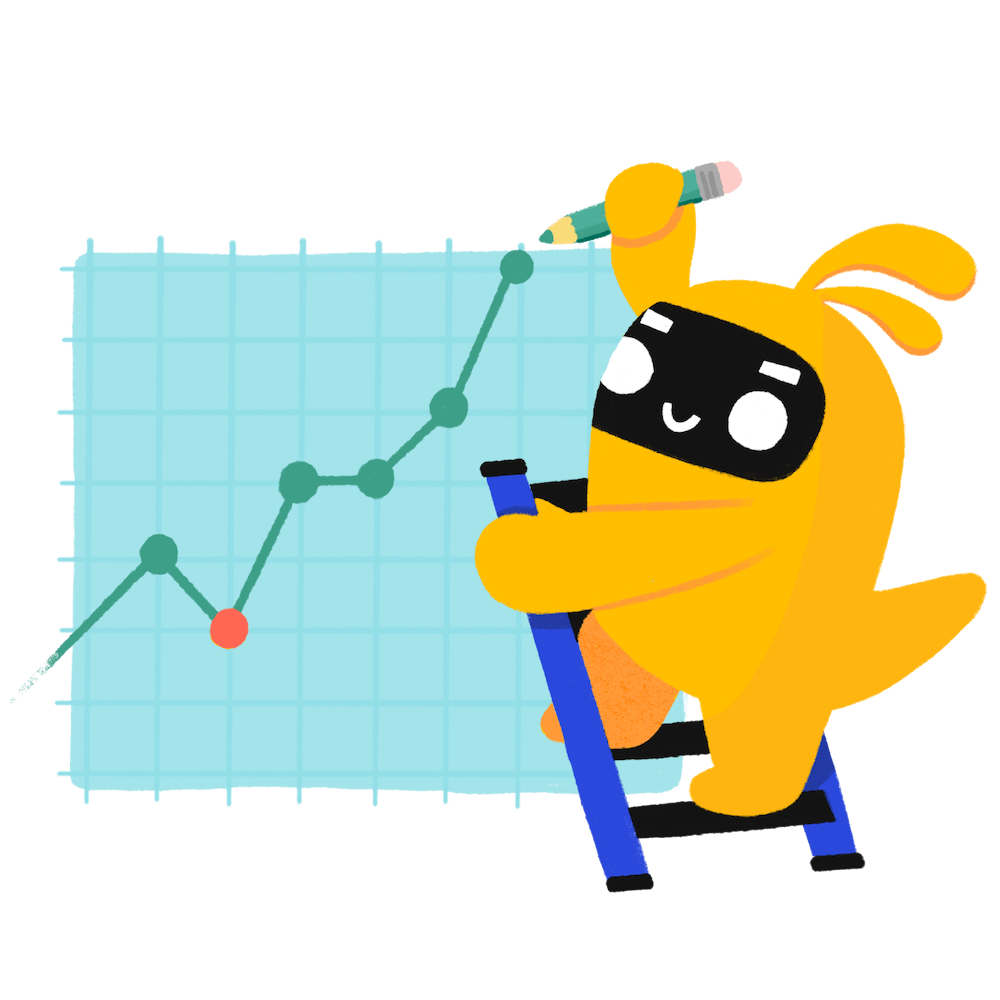2 customisable OKR examples for Reach Expansion
What are Reach Expansion OKRs?
The OKR acronym stands for Objectives and Key Results. It's a goal-setting framework that was introduced at Intel by Andy Grove in the 70s, and it became popular after John Doerr introduced it to Google in the 90s. OKRs helps teams has a shared language to set ambitious goals and track progress towards them.
Formulating strong OKRs can be a complex endeavor, particularly for first-timers. Prioritizing outcomes over projects is crucial when developing your plans.
We've tailored a list of OKRs examples for Reach Expansion to help you. You can look at any of the templates below to get some inspiration for your own goals.
If you want to learn more about the framework, you can read our OKR guide online.
Building your own Reach Expansion OKRs with AI
While we have some examples available, it's likely that you'll have specific scenarios that aren't covered here. You can use our free AI generator below or our more complete goal-setting system to generate your own OKRs.
Feel free to explore our tools:
- Use our free OKR generator
- Use Tability, a complete platform to set and track OKRs and initiatives, including a GPT-4 powered goal generator
Our customisable Reach Expansion OKRs examples
You'll find below a list of Objectives and Key Results templates for Reach Expansion. We also included strategic projects for each template to make it easier to understand the difference between key results and projects.
Hope you'll find this helpful!
1. OKRs to expand reach through paid advertising with 30% more impressions
Increase reach through paid advertising
Improve click-through rate by 10%
Increase ad spend by 20%
Identify ad campaigns with highest ROI
Optimize ad targeting and messaging
Expand ad reach through new platforms or channels
Increase bid amounts for top-performing campaigns
Evaluate campaign performance and adjust strategy accordingly
Implement changes and continue to monitor results
Identify successful campaigns and tactics
Review data from analytics and social media platforms
Adjust targeting, messaging, and budget based on performance
Test and optimize targeting for better results
Conduct A/B testing to determine most effective targeting strategy
Utilize data to adjust targeting for underperforming segments
Analyze demographics and interests of current audience
Continuously monitor and refine targeting approach for maximum impact
2. OKRs to achieve product-market fit and expand market reach
Achieve product-market fit and expand market reach
Increase customer satisfaction level by 30% through product improvements
Conduct surveys to identify areas of the product needing improvement
Implement improvements and track customer satisfaction levels
Develop a roadmap for product enhancements based on customer feedback
Establish partnerships in two new markets and secure initial contracts
Initiate business proposals with potential partners
Identify potential partners in target markets
Negotiate and secure initial contracts
Increase product usage by 25% in the newly penetrated markets
Offer promotional trials to entice initial usage
Implement product training sessions for new consumers
Launch targeted marketing campaigns to promote product awareness
Reach Expansion OKR best practices to boost success
Generally speaking, your objectives should be ambitious yet achievable, and your key results should be measurable and time-bound (using the SMART framework can be helpful). It is also recommended to list strategic initiatives under your key results, as it'll help you avoid the common mistake of listing projects in your KRs.
Here are a couple of best practices extracted from our OKR implementation guide 👇
Tip #1: Limit the number of key results
The #1 role of OKRs is to help you and your team focus on what really matters. Business-as-usual activities will still be happening, but you do not need to track your entire roadmap in the OKRs.
We recommend having 3-4 objectives, and 3-4 key results per objective. A platform like Tability can run audits on your data to help you identify the plans that have too many goals.
 Tability's audit dashboard will highlight opportunities to improve OKRs
Tability's audit dashboard will highlight opportunities to improve OKRsTip #2: Commit to weekly OKR check-ins
Don't fall into the set-and-forget trap. It is important to adopt a weekly check-in process to get the full value of your OKRs and make your strategy agile – otherwise this is nothing more than a reporting exercise.
Being able to see trends for your key results will also keep yourself honest.
 Tability's check-ins will save you hours and increase transparency
Tability's check-ins will save you hours and increase transparencyTip #3: No more than 2 yellow statuses in a row
Yes, this is another tip for goal-tracking instead of goal-setting (but you'll get plenty of OKR examples above). But, once you have your goals defined, it will be your ability to keep the right sense of urgency that will make the difference.
As a rule of thumb, it's best to avoid having more than 2 yellow/at risk statuses in a row.
Make a call on the 3rd update. You should be either back on track, or off track. This sounds harsh but it's the best way to signal risks early enough to fix things.
How to turn your Reach Expansion OKRs in a strategy map
Your quarterly OKRs should be tracked weekly in order to get all the benefits of the OKRs framework. Reviewing progress periodically has several advantages:
- It brings the goals back to the top of the mind
- It will highlight poorly set OKRs
- It will surface execution risks
- It improves transparency and accountability
Spreadsheets are enough to get started. Then, once you need to scale you can use a proper OKR platform to make things easier.
 Tability's Strategy Map makes it easy to see all your org's OKRs
Tability's Strategy Map makes it easy to see all your org's OKRsIf you're not yet set on a tool, you can check out the 5 best OKR tracking templates guide to find the best way to monitor progress during the quarter.
More Reach Expansion OKR templates
We have more templates to help you draft your team goals and OKRs.
OKRs to contribute proactively to three Atlassian Services proposals
OKRs to increase conversion rate of pre-launch leads for pre-orders by 10%
OKRs to enhance in-house legal team for aggressive business growth
OKRs to optimize talent acquisition and management processes
OKRs to successfully facilitate enterprise-wide requirements elicitation for tool selection
OKRs to seamless integration and deployment of Productiv SaaS application
OKRs resources
Here are a list of resources to help you adopt the Objectives and Key Results framework.
- To learn: What is the meaning of OKRs
- Blog posts: ODT Blog
- Success metrics: KPIs examples
Create more examples in our app
You can use Tability to create OKRs with AI – and keep yourself accountable 👀
Tability is a unique goal-tracking platform built to save hours at work and help teams stay on top of their goals.
 1 Create your workspace
1 Create your workspace 2 Build plans in seconds with AI
2 Build plans in seconds with AI 3Track your progress
3Track your progress